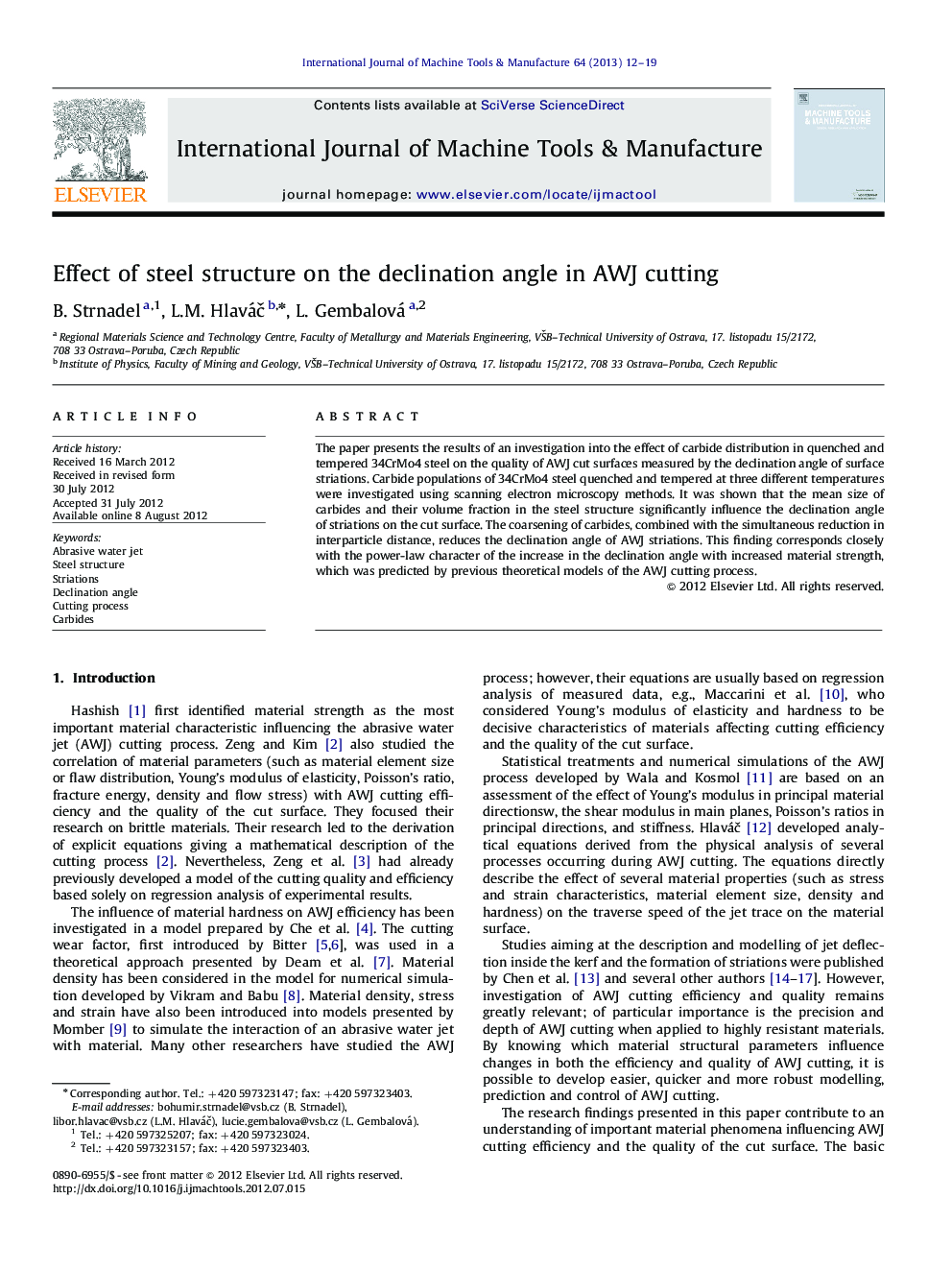| Article ID | Journal | Published Year | Pages | File Type |
|---|---|---|---|---|
| 784426 | International Journal of Machine Tools and Manufacture | 2013 | 8 Pages |
The paper presents the results of an investigation into the effect of carbide distribution in quenched and tempered 34CrMo4 steel on the quality of AWJ cut surfaces measured by the declination angle of surface striations. Carbide populations of 34CrMo4 steel quenched and tempered at three different temperatures were investigated using scanning electron microscopy methods. It was shown that the mean size of carbides and their volume fraction in the steel structure significantly influence the declination angle of striations on the cut surface. The coarsening of carbides, combined with the simultaneous reduction in interparticle distance, reduces the declination angle of AWJ striations. This finding corresponds closely with the power-law character of the increase in the declination angle with increased material strength, which was predicted by previous theoretical models of the AWJ cutting process.
► Increase in hardening increases the declination angle of the AWJ in steels. ► Increase in the AWJ declination angle corresponds with Hlaváč’s theoretical model. ► Higher tempering temperature makes steel more easily machinable. ► The martensitic structure of steel is less easily machinable. ► Higher Ni amount improves machinability of steel and reduces the declination angle.
